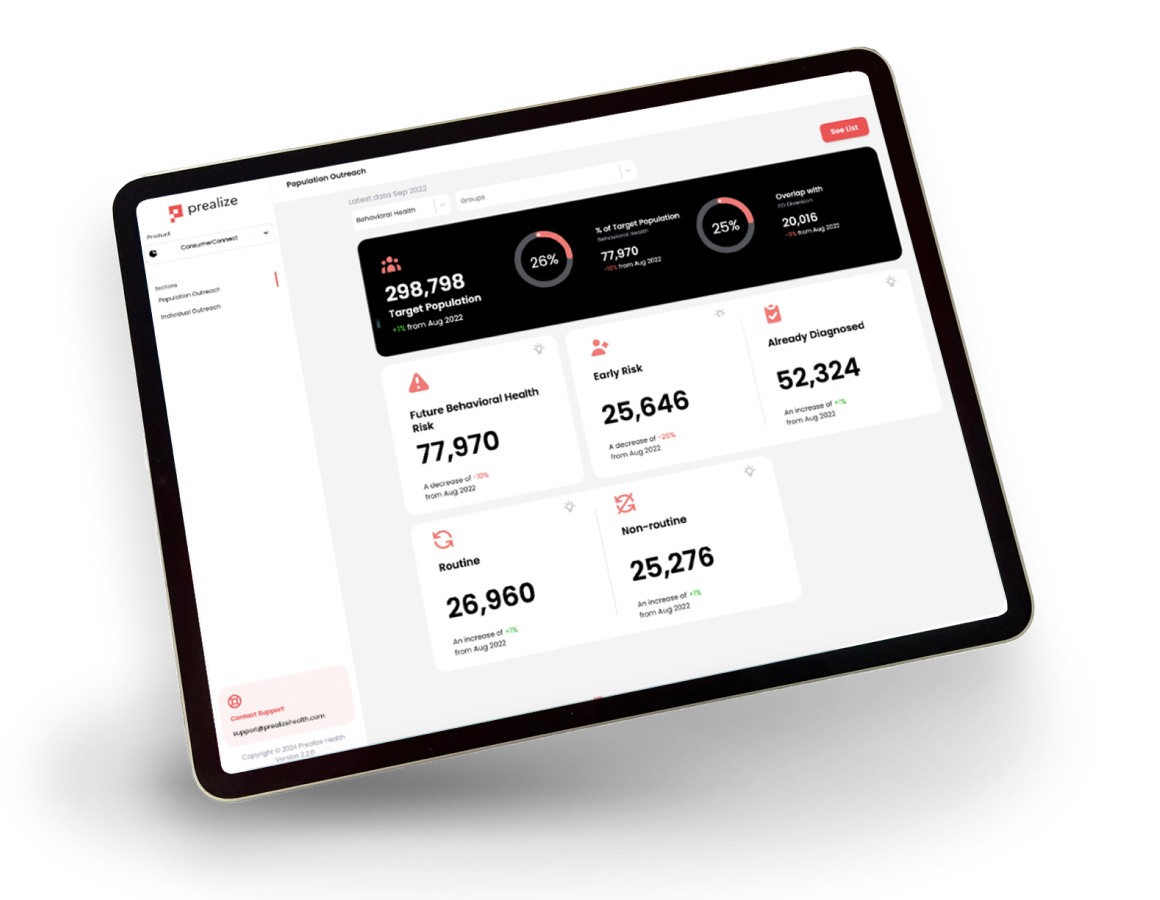
AI Foundation Models – the Next Big Leap for Healthcare Predictive Analytics
By Dean Noble-Tolla, Chief Product and Analytics Officer at Prealize Health
According to the Kaiser Family Foundation, health expenditures in America totaled about $1.4 trillion in 2000. In 2022, these expenditures topped $4.5 trillion—a more than 340% jump. There are some obvious reasons for this: technological and pharmaceutical advances, an aging population, the prevalence of chronic diseases, unhealthy lifestyles, and even heightening regulatory requirements all play a part.
However, often lost in this ever-inflating ‘cost bloom’ is the simple fact that the U.S. healthcare system is still unable to proactively address health at scale. The system itself is still highly reactive. And unfortunately, at every stop along the healthcare supply chain, the incentive is often to treat, rather than prevent disease. How do we change this?
Risk Prediction: The Necessary First Step to Prevention
We must start by recognizing that effective disease prevention is predicated on the capability for precise disease prediction. For decades, healthcare organizations have relied on past utilization as a window to the future. This approach only goes so far.
More recently, some forward-thinking organizations have introduced some limited machine learning into their predictive strategy. These approaches open the door to better predictive models than traditional linear or rules-based risk scores, but still take a bespoke approach to creating one model for one predictive problem at a time.
The resulting analytical output of both traditional models and limited machine learning models is still only a single risk score. And while a risk score coming from even a limited machine learning approach is a bit more accurate, it still does not give healthcare organizations the tools they need to underwrite group health and mitigate financial risk more precisely. It also does not give care managers the tools they need to target at-risk individuals with purposeful health interventions that improve health outcomes.
AI Foundation Models: Engines for Predictive Accuracy
Today, a new paradigm—the AI foundation model—now exists, and with it, healthcare organizations can take the next big leap towards actionable, individual-level health predictions.
At Stanford University, the preeminent U.S. institution for healthcare AI, Dr. Nigam Shah MBBS, PhD and his lab developed the first AI foundation model built and trained exclusively on the language of healthcare data. As a result, the foundation model better captures intricate relationships and understands the context in which medical information is presented.
The model incorporates vast amounts of diverse data to create a unique timeline of healthcare events for every individual in the population. This allows it to learn from and understand intricate temporal patterns and relationships within the data. And by employing hundreds of thousands of AI-selected attributes, rather than hundreds of hand-selected attributes, the foundation model can compress the longitudinal history of each member into a unique numeric vector called an embedding. This embedding is the key output of the foundation model and the launch point for all downstream predictive tasks.
Taking the embedding as a starting point, we can a fine tune this output to identify who will end up in the emergency department, who will be admitted as an inpatient, who will get a surgery, and which conditions will drive them toward these utilization events. We can even identify when these events will occur.
This large-scale AI foundation model approach is the key to delivering unmatched accuracy across a wide range of predictive health outcomes, rather than a single risk score.
As we add more data to each individual’s timeline, the foundation model continuously learns from, updates, and fine-tunes its outputs with each new data point to adapt to changing patterns and trends over time. Finally, the model leverages transfer learning, where knowledge gained from pre-training on a large dataset is transferred to specific tasks with smaller datasets.

By using healthcare data to build a longitudinal health timeline for everyone, AI foundation models offer an unmatched level of accuracy for healthcare predictions as to WHICH individuals and WHAT events will occur, as well as WHEN they will occur.
The added dimension of time is a game-changing capability that offers underwriters, clinicians, or anyone within the healthcare enterprise, an unheard-of level of predictive precision they can apply to the operational task at hand.
A Brave New World
Underwriters now can know when individual costs will exceed specific thresholds. They can more confidently underwrite business and mitigate financial risk. At the same time, clinicians can more effectively prioritize condition management programming to target at-risk individuals and intervene more effectively in driving healthier outcomes and lower healthcare spend throughout the ecosystem. Put simply, better predictions enable better prevention and lower healthcare costs.
As AI has now moved from the realm of science fiction to the world of practical reality, healthcare organizations are exploring the myriad of ways that AI can streamline and improve operations, reduce costs and/or positively impact patient outcomes. And as these organizations begin to infuse the power of AI foundation models into their predictive analytic strategies, the potential for truly proactive healthcare and disease prevention becomes possible.
For more information on Prealize Health’s AI foundation model, contact us at sales@prealizehealth.com.
ABOUT THE AUTHOR:
 Dean Noble-Tolla is the Chief Product and Analytics Officer at Prealize Health where he oversees the development of the most advanced AI model in healthcare. He has worked with both health plans and healthcare providers for over 15 years to build AI and machine learning predictive models, construct data pipelines, and develop analytics infrastructure.
Dean Noble-Tolla is the Chief Product and Analytics Officer at Prealize Health where he oversees the development of the most advanced AI model in healthcare. He has worked with both health plans and healthcare providers for over 15 years to build AI and machine learning predictive models, construct data pipelines, and develop analytics infrastructure.

Experience the Prealize Difference
We invite you to experience the transformative power of unparalleled accuracy. Request a demo today and see how Prealize can empower your organization to achieve better health outcomes, reduced costs, and a new era or proactive care.